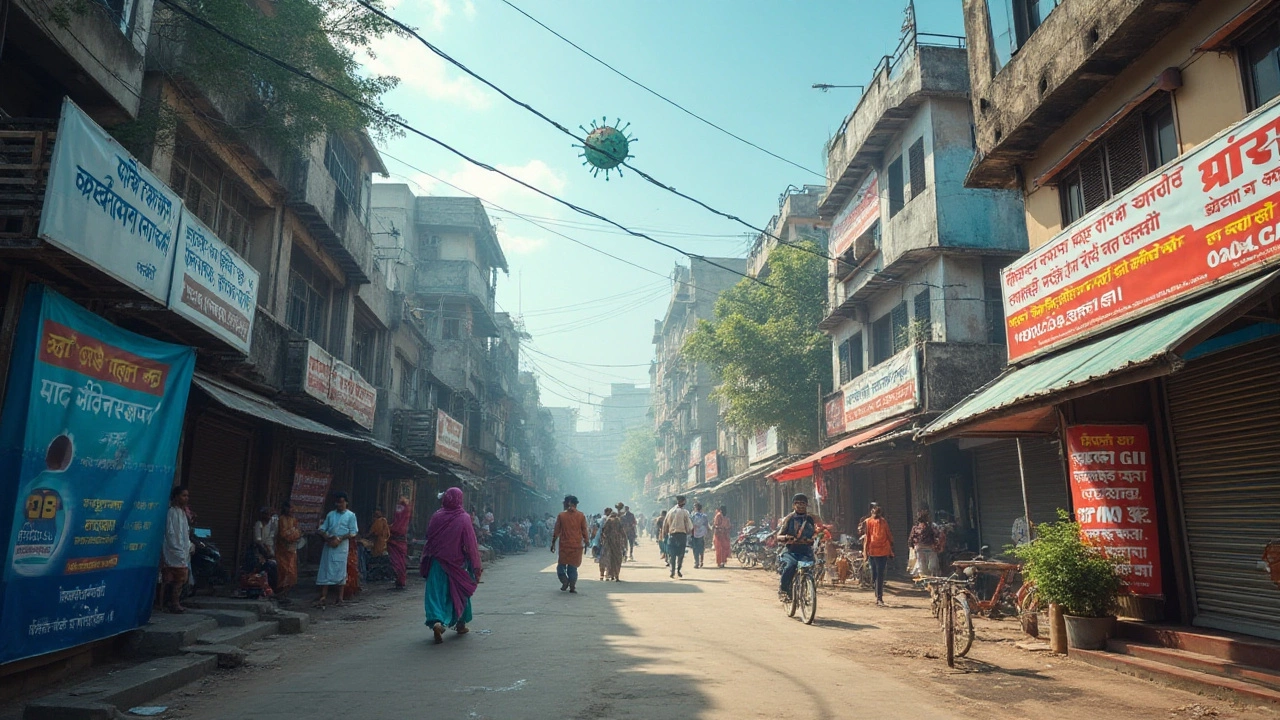In recent years, medical tourism has surged in popularity as patients travel across borders in search of affordable and timely healthcare. While this trend offers undeniable benefits to both individuals seeking care and host countries economically, it also brings with it significant challenges and negative impacts. Understanding these ramifications is crucial for maintaining balanced health systems globally.
As facilities in developing nations accommodate a growing number of international patients, local healthcare resources can become overwhelmed, affecting the quality and availability of services for resident populations. Furthermore, the movement of people between countries heightens the risk of spreading diseases, a concern that the global medical community cannot overlook.
Examining these issues helps shed light on the delicate balance between harnessing the economic benefits of medical tourism and safeguarding the health and well-being of all communities involved.
- Strain on Local Healthcare Resources
- Quality and Safety Concerns
- Public Health Risks and Disease Transfer
- Ethical Dilemmas and Healthcare Inequality
- Economic Implications for Host Countries
- Strategies for Mitigating Negative Impacts
Strain on Local Healthcare Resources
One of the immediate challenges posed by medical tourism is the burden it places on the healthcare infrastructure of the host countries. These destinations often market themselves as affordable alternatives to healthcare systems in the West. This marketing success leads to a significant influx of foreign patients. While this is financially beneficial for hospitals and clinics, it pressures existing resources, which are frequently already limited. An increase in patient numbers demands additional staffing, equipment, and space, diverting these critical resources from local patients who might need them more immediately.
Local patients can often find themselves pushed down the priority list of healthcare providers, facing longer wait times for treatments and procedures. This creates a ripple effect across the healthcare system, where the available facilities are strained, impacting the quality of care accessible to the local population. It's not unusual to find that in regions where medical tourism is thriving, the focus shifts predominantly to catering to foreign nationals whose payments often subsidize the entire system. This economic dynamic means that preference might inadvertently be given to those from overseas, leaving residents to endure overcrowded clinics and postponed medical interventions.
Dr. Jane Smith, a health economist, noted in a recent study that "the allure of foreign currency has hospitals leaning towards profit over service, often at the expense of local community needs." This observation throws light on the ethical concerns shared by numerous professionals who fear that the imbalance may widen the gap between accessible healthcare for rich foreigners and the needy locals.
Moreover, as healthcare providers shift their focus to meet international standards demanded by these medical tourists, the expense of upgrading equipment and facilities is passed back to local taxpayers and governments. This rise in operational costs might not proportionately improve the quality of healthcare available to natives, contrary to the promise of nationwide healthcare improvements often touted by medical tourism proponents.
Health travel destinations in India and Thailand are classic examples. Despite the influx of tourists, resources like hospital beds remain scarce for locals due to this reallocation of services. A 2023 survey reported that in key medical tourism hubs, up to 40% of hospital beds were occupied by international patients, creating a scarcity for residents who could not afford private alternatives. Such shifts in healthcare dynamics underscore the pressing need for policies that balance the benefits of attracting foreign patients while ensuring equitable access for the local populace.
Quality and Safety Concerns
The allure of **medical tourism** often lies in the promise of affordable healthcare solutions that bypass lengthy waiting times. However, the quest for cost savings and quick solutions can sometimes overshadow critical aspects like quality and safety. Patients traveling abroad for medical procedures might face healthcare systems that, despite being advanced in certain treatments, lack standardized regulations to ensure consistent safety measures. This variance can lead to significant discrepancies in the quality of care received.
In some countries, the healthcare facilities catering to medical tourists are accredited by international organizations, which gives them credibility. But not all institutions maintain these standards, and many operate under less stringent guidelines. This situation presents a challenge: patients might encounter complications or subpar outcomes due to the absence of rigorous safety protocols. Post-operative care, which is crucial for recovery, might also suffer, largely due to miscommunication or differing medical practices. A report by the Centers for Disease Control and Prevention highlighted that infections, treatment redundancy, and inadequate follow-up care are common issues faced by health tourists.
"Ensuring quality and safety in medical tourism requires a concerted effort by international health bodies and local regulators to establish and enforce global healthcare standards." - World Health Organization
Another issue affecting quality is the language barrier. Communication between patients and healthcare providers can become challenging, potentially leading to misunderstandings about procedures, recuperation, and potential side effects. Misinterpretation is not merely a minor inconvenience—it can significantly impact patient safety and treatment efficacy. Translation services are not always available, and even when they are, there might be inconsistencies in medical terminology that could affect a patient's understanding of their care.
Moreover, the lack of comprehensive medical records can pose further risks. When a medical tourist receives treatment abroad, the transfer of patient records between healthcare providers is not always seamless. The absence of a thorough medical history might impact subsequent treatments, as healthcare practitioners lack vital information to make fully informed decisions. This gap in information can lead to repeated diagnostics or even overlooking critical pre-existing conditions, therefore affecting overall patient safety and treatment success.
In tackling these **quality and safety concerns**, prospective medical tourists must perform due diligence. Patients are encouraged to research potential healthcare providers in detail, considering both the facility’s accreditation status and the qualifications of its staff. It is also advised to maintain clear and open communication with healthcare providers through translators if necessary, ensuring that any language barriers are adequately addressed. For those considering cross-border healthcare, understanding these quality issues and taking proactive measures can significantly mitigate risks and enhance their medical procedure's outcomes.

Public Health Risks and Disease Transfer
Medical tourism is not just about crossing borders for healthcare; it’s also about the unintended movement of pathogens. When individuals travel from one country to another for medical procedures, they might carry with them infectious agents or contract new ones, leading to the spread of diseases across regions. This aspect of medical tourism raises significant concerns in global public health circles. The rise of antibiotic-resistant bacteria is a pressing example, with many strains capable of traveling with patients from hospitals in one continent to another within hours or days.
It's important to note that the spread of diseases through medical travel is not merely theoretical. In fact, according to the World Health Organization (WHO), there have been instances where outbreaks in one country could be directly linked to medical tourists returning after receiving treatment abroad. These travelers may have been exposed to pathogens, consciously or unconsciously, which were absent or rare in their home country. This risk is escalated by the diverse healthcare standards across different countries, which might not match those in the patients' home regions.
Dr. Michael Osterholm, director of the Center for Infectious Disease Research and Policy, cautioned that "global travel can be the Trojan horse that brings an array of infectious agents into previously unaffected zones, challenging both local and international health regulations".
The transmission of diseases is not limited to the more obvious respiratory or gastrointestinal infections. Blood-borne viruses like HIV, hepatitis B, and C, are also considerable risks, especially when sterilization practices and screening processes in certain medical tourism destinations are lax. Moreover, the psychological aspect of patients desiring cheaper healthcare may lead them to overlook the importance of stringent infection control practices, aggravating this already complex situation.
This underlying threat can be better understood with numbers. A study by the Journal of Travel Medicine highlighted that about 20% of medical tourists have been known to acquire infections during their stay in a foreign healthcare facility. Though not extraordinarily high, this figure represents a substantial risk when considering the tens of thousands of global medical tourists each year.
To mitigate these risks, experts suggest a collaborative effort from both home and host countries. Implementing stringent patient screening and post-treatment monitoring can help trace the origin and prevent the dissemination of infectious diseases. Moreover, empowering patients through education about the potential health risks involved in medical travel decisions can foster informed choices and healthier outcomes.
Ethical Dilemmas and Healthcare Inequality
The rise of medical tourism brings forth a range of ethical dilemmas and exposes sharp contrasts between the care provided to local populations and that available to international travelers. At the heart of these ethical challenges is the prioritization of services for profit, often leading to healthcare inequality. In many countries renowned for attracting health tourists, such as Thailand and India, medical facilities allocate significant resources to cater to foreigners who can pay premium prices. This diverts attention and finite medical personnel away from local people who may struggle to access essential services. As a result, the host country's healthcare system may become split into two tiers — one with top-notch services reserved for affluent visitors, and the other struggling with resources, affecting the locals.
The situation becomes more complex when financial incentives are too tempting for local governments to ignore. By prioritizing the economic benefits of health travel, there is a risk of deepening disparities in healthcare access among different socioeconomic groups. When revenues from health tourism surpass those generated from treating local patients, there might be less motivation to improve the general healthcare infrastructure or to address public health emergencies domestically. Dr. Maria Andrade, a health policy expert, said,
"While medical tourism boosts local economies, it inadvertently establishes a dual system that doesn't serve the common good."Her insights force us to reconsider the moral obligations of healthcare providers who operate internationally.
The ethical concerns regarding medical tourism are also heightened by the occasional lack of transparency and oversight in foreign medical facilities. Patients sometimes receive treatments that may not be up to the standards found in their home countries, posing significant risks. There is a need for an internationally recognized accreditation system to ensure that health tourism maintains high ethical standards. Currently, there are voluntary organizations like the Medical Travel Quality Alliance that aim to rate healthcare facilities for international patients, but such measures need widespread adoption to be effective. Without proper regulation, these inequalities may widen, fostering an environment where wealth and connections dictate access to healthcare.
Another aspect of ethical concern is the potential exploitation of scarce medical resources in developing countries when wealthy tourists occupy hospital beds, leaving underprivileged natives without the care they desperately need. The balance between fostering economic development through health travel and ensuring equitable health access for all local citizens remains delicate. Public policy must aim to regulate and strategically channel the benefits of medical tourism to enhance national healthcare systems. Countries like Cuba have shown models where medical tourism is used to fund public health for locals, but such models need adaptation to suit differing local realities around the world.

Economic Implications for Host Countries
Host countries, especially those in developing regions, often view medical tourism as a lucrative source of income that can significantly boost their economies. This sector attracts foreign currency, and patients coming from abroad spend on a range of services beyond healthcare, including accommodation, food, and leisure activities. Local businesses in the tourism and hospitality sectors can see significant financial gains, creating a positive ripple effect in these communities. Additionally, the industry's growth can lead to job creation in medical and supporting sectors, offering employment opportunities to locals who might otherwise face limited options in their job market.
However, these benefits come with complex economic challenges. The focus on attracting international patients can redirect resources away from local healthcare services, potentially increasing costs and reducing access for domestic patients. There's a risk of inflating prices for medical services as hospitals seek to capitalize on perceived willingness of overseas patients to pay more, which can be detrimental to residents' access and affordability. This dual-market scenario can deepen economic disparities, making healthcare even more inaccessible to the poorer sections of the host population.
Short-Term Gains Versus Long-Term Sustainability
Countries might witness short-term economic gains through investments and improvements in healthcare facilities geared towards health travel. However, long-term sustainability is put to the test when these facilities prioritize foreign clientele over local needs. A focus on immediate revenues rather than building a robust healthcare system for the entire population can lead to infrastructural imbalances. As domestic patients experience longer wait times and limited access to high-quality care, public health might suffer, demanding significant investments later to rectify the imbalances.
According to a report by the World Health Organization, "While medical tourism can be an engine for economic growth, it can also exacerbate inequity in health systems unless carefully managed."
Furthermore, the reliance on medical tourism might make economies vulnerable to fluctuations in global travel trends. Any global downturns or restrictions, such as during pandemics, can drastically affect the inflow of health tourists, highlighting the fragility of relying too heavily on this sector for economic stability.
Effective Strategies for Mitigating Issues
To address these challenges, host countries can implement strategies aimed at balancing the benefits and drawbacks of tourism effects. Encouraging public-private partnerships can help improve healthcare infrastructure for both domestic and international patients. Implementing policies that ensure a portion of profits from medical tourism are reinvested in local healthcare can also help alleviate resource disparities. Furthermore, setting fair pricing mechanisms minimizes cost inflation risks associated with international patient focus.
In summary, while medical tourism undoubtedly offers economic incentives for host countries, it also presents a range of implications that require careful and sustainable planning. Balancing short-term profits with long-term community health needs and ensuring an equitable healthcare system are crucial for turning economic opportunities into holistic national growth.
Strategies for Mitigating Negative Impacts
Medical tourism brings various benefits, yet it comes with its set of challenges, especially for host countries. To address these, several strategies can be employed. One approach is implementing policies that ensure a balance between catering to international patients and meeting the needs of the local populace. Healthcare systems might assign particular times or facilities exclusively for tourists to prevent domestic patients' sidelining. Adequate funding must also be channeled into strengthening public health infrastructure to support the additional burden caused by medical tourists. By fostering robust healthcare systems, it ensures preparedness for both domestic and international demands.
Another crucial step is international cooperation. Governments and healthcare organizations need to collaborate to set guidelines and regulations concerning medical tourism. This involves standardizing procedures and care protocols so that quality remains consistent globally. Sharing data about healthcare practices across borders not only elevates the standard of care but also reduces risks associated with it. Cooperative efforts can lead to a global standard where countries support each other in maintaining ethical practices and safeguarding patient interests. By doing so, medical tourists receive safe and reliable treatment no matter where they seek it.
Public awareness and education also play vital roles in mitigating negative impacts. Campaigns to educate potential patients on the possible risks and necessary precautions can prepare them better for their medical journey. This includes informing them about the importance of follow-up care in their home country, post-treatment. Education can empower patients to make informed choices about their treatment options, thereby leading to a safer and more efficient healthcare experience.
Implementing health monitoring and surveillance systems is crucial in tackling potential public health risks. These systems help in the early detection and control of communicable diseases that tourists might introduce. By setting up checkpoints at hospitals and airports, it ensures the swift identification and isolation of cases, thereby protecting both local and international communities. Strengthening these measures aligns with the global objective of ensuring health safety amidst rising medical tourism.
The economic implications of medical tourism cannot be overlooked. Health administrators and policymakers must strike a fine balance where economic benefits do not compromise the quality of healthcare for residents. Investment in training and resources for local healthcare workers is vital. Doing so equips them not only to handle the influx of tourism effects but also to provide exemplary service to residents at all times. By focusing on capacity-building initiatives, countries can leverage the economic opportunities medical tourism presents while ensuring sustainable healthcare.
Finally, ethical considerations should underpin strategies aimed at mitigating negative impacts. Ensuring equal access to medical services for locals and tourists requires a firm commitment to ethical practices. Countries can establish accreditation bodies to oversee ethical standards, ensuring that the promise of profitable medical tourism does not overshadow the fundamental rights of local patients. By doing so, it fosters trust and goodwill in the global healthcare market.





